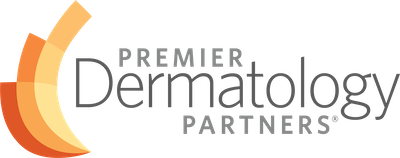What Are the Differences Between Botox and Dysport?
Since receiving FDA approval in 2002, botulinum toxin type A has been used by cosmetic specialists to help patients reduce the appearance of facial lines and wrinkles. Better known by its original brand name Botox®, botulinum toxin achieves this wrinkle reduction by temporarily paralyzing certain muscles in the face. After the success and prominence of Botox injections, it didn’t take long for other companies to create their own products based on botulinum toxin type A – Enter Dysport®, a European counterpart to Botox first approved by the FDA for American use in 2009. Though not as well-known as Botox, Dysport has become another go-to method for wrinkle reduction, used by many dermatologists and cosmetic professionals (alongside other similar products like Xeomin®).
If you’re interested in either of these injectables, it’s only natural to wonder how they differ. Is one option better than the other? Or are Botox and Dysport just two names for the same thing? Let’s break down the main differences between Botox and Dysport so you can make a more informed decision regarding your wrinkles.
Their Primary Areas of Use
The most significant distinction between Botox and Dysport is what they’re specifically used for. Sure, both injectables are designed to treat fine lines and wrinkles, but each option is better at dealing with certain types of wrinkles than others. Dysport, for instance, is best at mitigating moderate to severe frown lines between one’s eyebrows (i.e., glabellar lines) and around the forehead area. Botox, on the other hand, is a bit more versatile. Whether you’re concerned with crow’s feet, laugh lines, or forehead wrinkles, Botox generally yields good results for all of these areas (especially if said lines are mild to moderate).
Immediacy of Results
The differences between Botox and Dysport don’t end there, however. In addition to tackling different types of wrinkles in different locations, these distinct injectables also express visible results at different rates. Generally speaking, Dysport patients notice a reduction in their wrinkles in a matter of days, whereas Botox patients may need to wait closer to a week before noticing any changes. That said, both products peak around the same point (~2 weeks) and offer about 3-4 months of longevity. So, whether you go with Botox or Dysport, you’ll likely need to seek subsequent treatments around the same time.
Amount Needed for Similar Effects
Botox and Dysport also differ in potency. Simply put, Botox is about three times stronger and Dysport in similar amounts. This discrepancy means that a single unit of Dysport costs less than a single unit of Botox, which is worthy of consideration for those looking to save money – of course, it also means that you’ll need about three times as much Dysport as Botox to reduce wrinkles to a similar degree, so the cost usually ends up evening out.
The Verdict
Botox and Dysport have a lot in common. Both products derive from botulinum toxin A, are injected into the face, reduce the appearance of wrinkles, peak around two weeks and last 3-4 months, and cost about the same to yield similar results. However, they’re also optimized for different types of wrinkles, reveal initial results at different times, and differ in strength per unit. If you’re not sure which option is right for you, talk to your dermatologist. At Premier Dermatology Partners, we offer both Botox and Xeomin to our patients, but we know plenty about Dysport, too.
To learn more about our providers and all the services we offer, contact us today.
